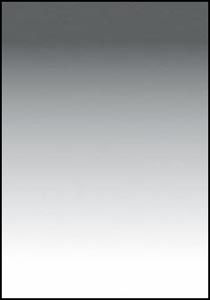A background is just that - a backdrop that occupies all the negative space behind the subject. However, it is a vital part of an image. Excellent results cannot be achieved without careful attention to this aspect of a set-up. The eye of the viewer must not be distracted from the subject, so the background is usually featureless and unobtrusive. Stripes, spots, bold patterns and bright colours should not be used unless they are an essential and carefully selected element of the composition.
Plain fabric or paper backgrounds are often the most effective simple solution. Dark neutral colours work well in many cases, but light colours and white backdrops are also possibilities. Take care to eliminate all creases and folds in the backdrop because high-contrast lighting tends to reveal and exaggerate every imperfection. Unwanted shadows may also be produced. With this type of work, as with many others in photography, attention to detail can change an average image into something exceptional.
Backgrounds can of course extend beneath the subject as well as filling the negative space to the rear. As in a studio, the background fabric or paper should be arranged to follow a gentle curve from the vertical surface to the horizontal table top. This has the advantage of eliminating the straight line that separates the vertical and horizontal surfaces. This line, where present, divides the image into two areas which a viewer tends to see individually.
 Choice of background depends upon the nature of the subject of the image. A bowl of brightly coloured fruit might benefit from dark neutral backdrop, or one with tones that work with those of the subject.. Small objects might be placed on a uniform black non-reflective surface such as velvet. Alternatively they might also be placed on a sheet of glass or a mirror to add attractive reflections. in the case of transparent glassware, a plain white backdrop works well. Lighter coloured china items are perhaps best shown against a contrasting plain black background, but white backdrops can also be used. Highlights on reflective subjects such as glass and china can be removed or reduced by using a well-lit plain white backdrop. Experimentation is the key. Take time to select the best backdrop before worrying about the other details of the set-up, otherwise the subject has to be removed while the background material is changed.
Choice of background depends upon the nature of the subject of the image. A bowl of brightly coloured fruit might benefit from dark neutral backdrop, or one with tones that work with those of the subject.. Small objects might be placed on a uniform black non-reflective surface such as velvet. Alternatively they might also be placed on a sheet of glass or a mirror to add attractive reflections. in the case of transparent glassware, a plain white backdrop works well. Lighter coloured china items are perhaps best shown against a contrasting plain black background, but white backdrops can also be used. Highlights on reflective subjects such as glass and china can be removed or reduced by using a well-lit plain white backdrop. Experimentation is the key. Take time to select the best backdrop before worrying about the other details of the set-up, otherwise the subject has to be removed while the background material is changed.
Graduated backgrounds are particularly effective when photographing pieces of glass or chinaware. Professional graduated continuous-tone backgrounds, readily available in a range of colours, give depth to an image by creating the impression of a lighter foreground that fades in to a much darker background. These are manufactured from matt vinyl and can be used conveniently inside a light cube to create stunning images of glasses, bottles and other comparable items.






